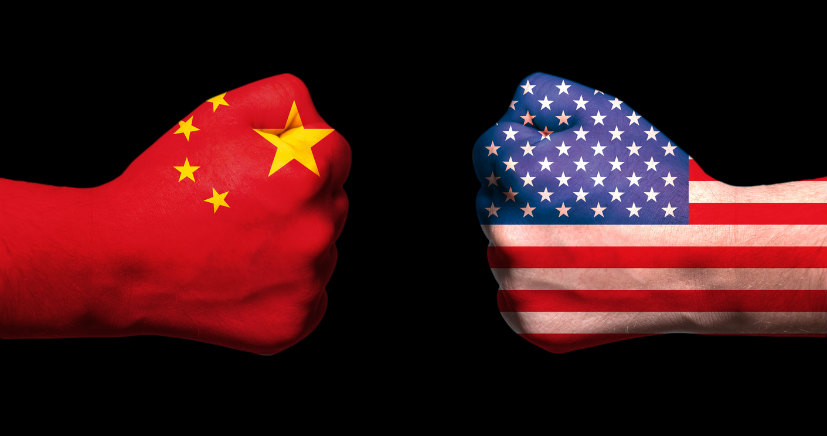The current game mode is isolation.
- On top of incentivising the Middle East to pivot West, the US Department of Commerce has warned that the use of Huawei chips is a violation of US export controls.
- This is a thinly veiled strategy aimed at further isolating China from the rest of the global technology ecosystem.
- If the majority of the planet is aligned against China when it comes to technology standards, then this will greatly help the USA and the West to win the ideological struggle that is currently being fought in the technology sector.
- The US Bureau of Industry and Security (BIS) has issued guidance “that using Huawei Ascend chips anywhere in the world violates US export controls”.
- This is not a new regulation but a warning of how the BIS interprets the rules that are currently in place.
- Huawei is present on the Entity List which means that any products or technologies deemed to be sensitive must receive a license to be exported to any company or entity present on the list.
- With the default response to applications being refusal, this effectively means that Huawei should be cut off from the technology in question.
- In 2022, the rules were tightened to include any technology that enables the manufacture of silicon chips at a process node below 20nm which means that Huawei’s 7nm chips have been made using currently restricted equipment and software.
- Huawei’s 7nm process involves using a multipatterning technique using equipment that was originally designed for processes around 14nm in size and so logically falls foul of the 2022 restriction.
- However, if Huawei is using equipment and software that was purchased before October 2022, then arguably, Huawei’s chips are not in violation of any regulations.
- China is known to have stockpiled large amounts of foreign equipment that is now restricted, and so it could easily be the case that Huawei’s chips are not technically in violation of the restrictions.
- However, as this is a very grey area, and regardless of whether this interpretation is enforceable by a court, it will serve as a strong disincentive to choose Huawei chips over the chips of Western competitors.
- In the long term, I don’t think that this kind of heavy-handed disapproval is needed as it is the economic viability of these chips that will really determine whether or not other countries use them.
- The Huawei 7nm process has many more steps and is more intricate, meaning that the yields are substantially lower than those being produced at TSMC and elsewhere.
- Furthermore, TSMC, Samsung and Intel are all quickly moving beyond 4nm, meaning that Huawei’s process is already 2 or more generations out of date.
- This means that Huawei chips will be more expensive to make and will consume more power per token of data produced, making them a poor choice for anyone looking to build AI infrastructure.
- However, China is determined to become a technology powerhouse in its own right, which it means that it needs to compete with the West in 3rd party countries.
- I think that Huawei is unable to do this on the merits of its technology alone, and so it will require subsidization, which I am certain is being offered to anyone willing to consider the Ascend family of chips for AI.
- This will skew the market and hide how uncompetitive the chips are but I am pretty sure that the Chinese state can only keep this up for so long.
- There are already 12 fabs under construction that will use the 7nm process, implying that China has made a big commitment to this technology and that very large subsidies will be required to maintain competitiveness outside of China.
- I am far from convinced that China has the economic power to keep this up for very long, and so sooner or later, the economic reality of this process will make itself clear.
- In the meantime, the angry frown of the BIS will act as a disincentive to select Huawei chips for AI until China can no longer afford to subsidise Huawei, and economic reality shows up.
- Saudi Arabia, UAE and potentially Qatar are pivoting away from their historic technology relationships with China, which will serve as an example for other countries making these kinds of decisions.
- The net result is that the US is moving to ensure that it is US and Western standards that have the largest global adoption, leaving China with its own standards for its domestic market only.
- As the world’s second-largest economy, the domestic market is big enough to ensure that its standards are viable at home, but it is going to be much harder to win adoption overseas.
- This is critical to winning the ideological struggle and so for the moment, it looks to me as if the US and the West have the upper hand.
- In the very long term, this does mean multiple technology standards and the splintering of global networks into two incompatible parts, which has substantial and negative ramifications for the growth of the global technology sector as a whole.
- As far as the US administration is concerned, this appears to be a price worth paying.










Blog Comments
TLT
May 15, 2025 at 12:08 pm
Can you tell me how many of your predictions about China have been correct so far?
andyinsdca
May 15, 2025 at 4:24 pm
China certainly isn’t doing themselves any favors with having “rogue” communication devices in solar inverters, among other things.